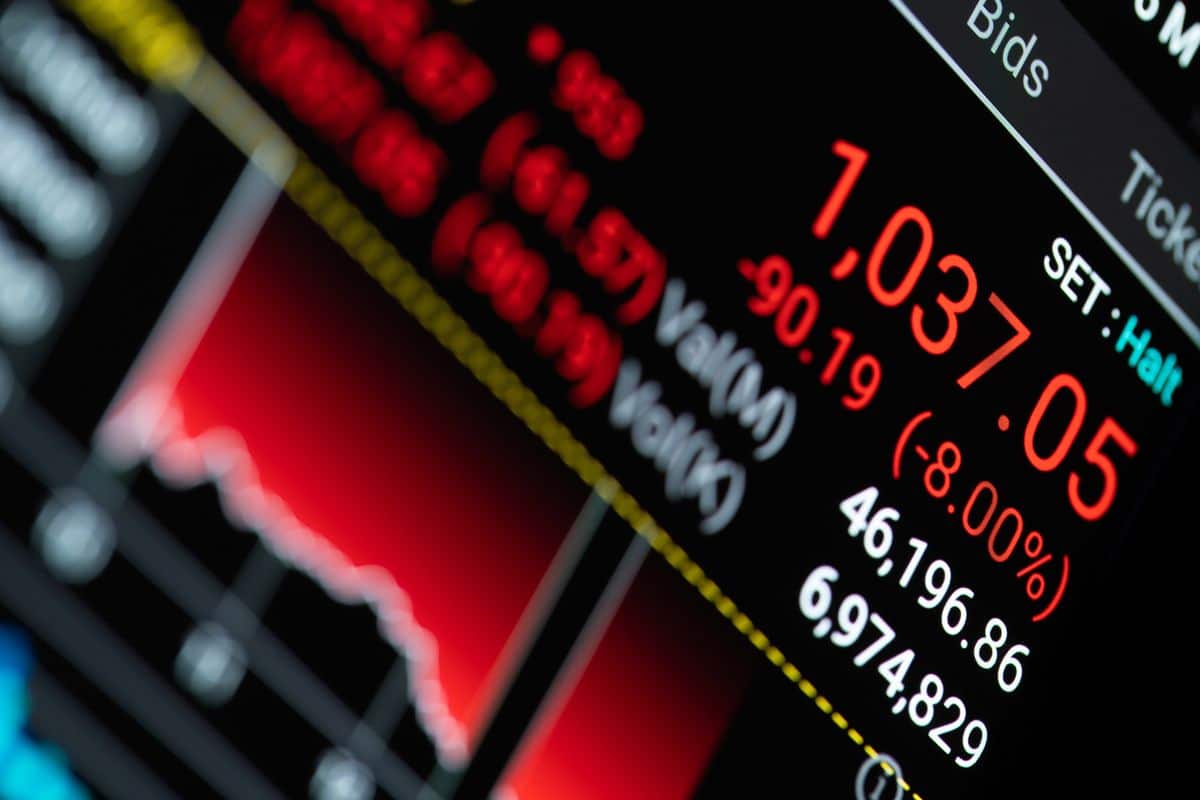Economic Crises Of The United States
By reading the article “Economic Crises Of America” published in Adaas Capital, you will get acquainted with the concept of crisis in general and its dimensions in economics. This level of familiarity can be enough when you need educational information about this topic.
Table of Contents
What are periodic crises in the economy?
Periodic crises in the capitalist economy have occurred many times in the world. It should be noted that the economic crisis lies in the nature of the free capitalist economy and most of the world’s major economic crises have ignited on the New York Stock Exchange and spread to Europe and other parts of the world.
The difference between a recession and an economic crisis is that recession is the cessation of growth and prevalence, but a crisis of decline is prosperity and prevalence.
Joseph Schumpeter’s theory of recession
Harvard University Austrian professor Joseph Schumpeter has done the most research on economic fluctuations. In his view, innovation and discovery play a prominent role in economic transformation.
The boom phase begins with innovative employers. They expand the scope of activities with new products and innovations to make more profit, with new and more profitable plans. They make new investments, they create new jobs.
There are not many innovative and entrepreneurial employers. Following them, other employers seek out innovative innovators, make similar efforts, invest, and start new businesses for more profit. Other people gradually follow them and enter the field, and as they find innovation possible, their number increases, and they imitate.
Overall, there is more investment, new jobs, and increased productivity. The greater the number of producers and the longer the period of imitation, the longer the period of prosperity.
The recession will come when the boom reaches its peak. The influx of imitation manufacturers is increasing competition and increasing their products. Prices go down, and as the market fills with products, we face an oversupply of demand, and the recession begins and loses its color boom.
Interdependence of the international financial system
In recent decades, the complexity of the global economic system and the entanglement of financial, banking, capital, stock, and trade systems have increased, one of the main symbols of which is the globalization of the economy.
One of the characteristics of the development of human societies over many decades is the closely interrelated dimensions of the international financial and monetary economy. This intertwined situation is rapidly becoming what is known as the process of network globalization. Globalization is also characterized by network globalization.
globalization of the monetary and financial system
The globalization of the network of the international monetary and financial system, along with its interdependence, indicates the entanglement, depth, and complexity of international and global developments, as if all the world’s economies are interconnected and connected like a chain. Under such circumstances, all countries will be affected by global crises in proportion to the trade and financial ties between them.
Two groups of countries have suffered the most from these crises:
- The first category is developing countries that have chosen the strategy of development in the context of globalization and are exposed to serious harm.
- The second group is the countries that experience the policy of integrated and international economic convergence and have chosen the strategy of international operation and are undoubtedly faced with a huge amount of technology, capital, goods, and services, as a result of which the biggest wave of crisis has hit this country.
The economic crisis of 1929-1930 in the United States
It was the worst crisis of the twentieth century, the fire of which began in the United States, which was the most progressive. The United States flourished in several industries, such as automobiles, radios, and home appliances. In contrast, the railway, coal, and spinning and weaving industries were in recession.
In the meantime, US officials have pursued a policy of declining prices and direct interventions in the money market to stabilize prices, unaware that the artificial preservation of prices, when agricultural prices have plummeted, is in fact an increase in the prices of industrial goods and Increasing the profits of the industrialists leads without raising the price of wages, and somehow the credits given are spent on trade and speculation instead of on production.
Investment growth was much higher than savings growth, and investment over savings boomed in the shadow of credit inflation. On the New York Mercantile Exchange, where stocks must be traded in cash, brokers would accept customer orders on a conditional return of up to 10 percent of the cash order, and they took the control of the remaining 90 percent in stocks.
This policy helped brokers to ask their clients for cash whenever there was a downturn in the stock market, and if customers refused to pay the desired amount, they would sell the deposit shares and make up for the deficit. In this way, brokers credited 90% of speculative funds to their clients.
Under these conditions, stock prices were rising day by day, but dividends were falling. General Motors, for example, had fallen from $18 to $92, and its dividends had fallen from 13 percent to 6 percent. Under these conditions, stock prices rose by speculation, and the purchasing power of farmers and workers, who made up the greater part of society, diminished.
To compensate for the purchasing power deficit, farmers tried to produce more products and increase the productivity of their crops by using new machinery and tools, but as they increased their effort, their income did not change due to the low elasticity of agricultural goods in At that time, as well as their ability to buy industrial goods was reduced, and the balance between agriculture and industry was further disturbed.
The economic crisis began in 1929 in the U.S.
In October 1929 there was an economic crisis. Part of the crisis could be attributed to the Bank of England raising interest rates, rising interest rates, and moving some European capital out of the United States.
Meanwhile, the big banks led by JP Morgan and injecting $240 million into the stock market to maintain stock value were still useless.
The stockbrokers realized that there was a severe psychological atmosphere in the people. They all ordered their brokers to go out and sell their shares in full and the New York Stock Exchange faced a stock surplus.
The New York Stock Exchange began falling on October 24, 1929, and lasted for 20 days. Meanwhile, the stock index rose from 469 to 220, and investors and speculators lost $30 billion.
This economic situation continued until winter, and with the arrival of the spring of 1930, the situation still did not change, and also in May 1930, the crisis spread. By the spring of 1932, prices continued to fall, and production had fallen sharply, wages had fallen, unemployment had risen sharply, and by 1933, when Roosevelt came to power, there were nearly 15 million unemployed.
The 2007-2009 US Economic Crisis
This crisis was a kind of financial crisis, for this purpose, and this crisis occurred in financial and investment institutions. A financial crisis is a specific situation in which banks and financial institutions lose some or all of their assets.
The formation of the economic crisis of 2007 in the United States
Examining the causes and roots of this economic crisis in 2007 in the United States, we can mention the bursting of the price bubble in stocks as well as the 9/11 attacks.
Between 1995 and 2001, the United States and a number of Arab countries saw the rapid and growing value of shares of companies operating in the Internet and related industries, which led to the so-called .com bubble became IT crisis.
Investigating the causes of the economic crisis of 2007
Examining the causes and roots of this financial crisis in the United States in 2007, we can mention the bursting of the price bubble in stocks as well as the 9/11 attacks.
Between 1995 and 2001, the United States and a number of Arab countries saw the rapid and growing value of shares of companies operating in the Internet and related industries, which led to the so-called .com bubble IT became crisis.
Monopoly in the IT industry is more pronounced than any other industry, and large companies that owned the Internet could easily outperform their small competitors. Adding interest rates to the US Federal Reserve in late 1999 and early 2000 caused the Nasdaq Index, which represents the tech sector, to burst on March 10, 2000. Eventually, by October 2002, more than $ 5 trillion had been lost to technology institutions.
Investigating the Role of US Banks in the 2007 Economic Crisis
The Federal Reserve cut interest rates 27 times from January 2001 to January 2003, lowering interest rates from 6.5 percent to 1 percent to get out of this situation. With lower interest rates and the use of expansionary fiscal policies, the cost of keeping money for people has decreased, and many people are withdrawing their money from banks and putting this stray money into markets such as cars, housing, and services.
A large amount of these financial resources entered the housing sector and led to the prosperity of this sector and increased investment in this sector. Demand for housing also increased as house prices rose, and given that housing plays a very important role in the assets of American families, it was able to alleviate some of the effects of the .com bubble.
As the federal government cut interest rates, US banks made major changes to their mortgage financing methods. Before that, in the traditional model, banks secured their mortgage loans through deposits they received from bank customers. Also, in the traditional model, before giving a loan to the borrower, the ability of the borrower to repaythe installments of the loan was measured.
All of the above, such as lower interest rates by the Federal Reserve, reduced bank management in lending, reduced personal borrower recovery, and even the sale of bonds in the New York Stock Exchange, have made these types of loans attractive low-income people and many Be a newcomer.
According to statistics released in 2001, banks and financial institutions have lent $2.2 trillion, mainly in the housing sector, of which $190 billion was mortgages. In 2005, of the $3.2 trillion lent, $625 billion (about 20 Percent of these loans) has been as follows. Some sources estimate that total housing lending by 2007 was about $7.5 trillion, of which $1.3 trillion was mortgages.
Simultaneously with the conditions of increasing demand in the housing sector, sales of more than 5.5 million housing units began during the years 2004-2006. This increased supply in the market and created a mismatch between supply and demand, and the housing sector entered a recession. As soon as housing prices fell, the refusal to repay loans expanded, resulting in the confiscation of many people’s properties by banks and putting them up for sale, which in turn boosted supply.
In 2007, more than 1.3 million housing units were confiscated by banks, and falling housing prices prevented many banks from collecting their claims. Also, due to the sale of housing bonds, banks had to pay large sums to repay bonds sold on the stock exchange, which put the banks under a lot of pressure.
As the housing sector is directly linked to 5,000 other sectors, a recession and widespread economic crisis swept the country again.
Consequences of the economic crisis
- With the release of the negative balance of the accounts of the banks that had bought the mortgage bonds, many people rushed to the banks to get their accounts. On the other hand, due to banks lending to each other, caused the crisis to spread from one bank to another.
- Rising unemployment. Because many of their jobs were linked to the housing industry, many people lost their jobs, exacerbating unemployment in the community.
Solutions and policies to economic crises
- Merger companies by each other
- Granting free loans by the government
- Buy shares of companies
- Increase the capital of banks
- Helping the vulnerable
- Inject money and accept the budget deficit
The end words
At Adaas Capital, we hope that by reading this article you are fully acquainted with the answer to the question “What Is Economic Crisis?”. You can contribute to our progress by sharing the article “Economic Crises of America” published in the Adaas Investment Magazine and contributing your comments to help optimize this article.
References
- Investopedia.com
- Wikipedia.org
- Thebalance.com
- This Time Is Different by Carmen Reinhart and Kenneth Rogoff
FAQ
What are economic crises?
The difference between a recession and an economic crisis is that recession is the cessation of growth and prevalence, but the crisis of decline is prosperity and prevalence.
What is a recession?
The recession will come when the boom reaches its peak. The influx of imitation manufacturers is increasing competition and increasing their products. Prices go down, and as the market fills with products, we face an oversupply of demand, and the recession begins and loses its color boom.








